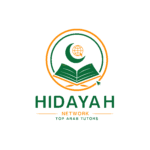Noorani Qaida is a fundamental book used to teach Tajweed. Mastering Tajweed is vital for anyone wishing to recite the Quran accurately and properly. If you are looking for how to learn tajweed? We will help you explore the essential principles of Tajweed as laid out in the Noorani Qaida, making it easier for you to set out on your journey of reciting the Quran with precision and devotion.
Tajweed rules for Noorani Qaida are Makharij-al-Huroof, Sifaat-al-Huroof, Noon, Meem, Muddud, and Laam. Understanding how each of these are used, their applications, and their significance is vital. Let’s dive into more detail here!
Table of Contents
ToggleTajweed Rules Noorani Qaida
The following are Tajweed types for Noorani Qaida:
1. Makharij-al-Huroof
Makharij-al-Huroof refers to the precise articulation of Quranic letters. Mastering these articulation points is essential for correct Quranic recitation. For instance, when pronouncing the Arabic letter “خ” (kha), you must produce the sound from the deep part of your throat.
Understanding Makharij-al-Huroof is greatly beneficial when learning Tajweed, as it ensures you can enunciate each letter distinctly and clearly. This clarity is vital, especially when teaching kids to recite the Quran with Tajweed from an early age, as it helps them develop a strong foundation in pronunciation and prevents common mistakes.
Get 40% OFF Now!
2. Sifaat-al-Huroof
Sifaat-al-Huroof relates to the characteristics or qualities of Quranic letters, such as whether a letter is pronounced softly or with a heavy sound. For example, the Arabic letter “ق” (qaf) is pronounced with a deep, heavy sound, which is quite distinct from the soft pronunciation of “ت” (ta). Recognizing and applying these qualities are crucial when reciting the Quran with Tajweed, as they impact the rhythm and melody of your recitation.
Learning these qualities offers significant benefits when reciting the Quran with proper Tajweed, enhancing the beauty and flow of your recitation. It’s an invaluable skill, especially when teaching children to recite the Quran with Tajweed, as it instills a sense of melody and rhythm in their recitation.
3. Noon (Noon Sakinah and Tanween)
Noon Sakinah and Tanween are specific cases in Tajweed that involve the pronunciation of noon (ن) with certain vowel sounds. For instance, in “مَنْ” (man), the noon has a temporary sukoon (a pause) represented by a small circle. Understanding these rules is immensely beneficial as they prevent mispronunciations and errors in the Quranic text, maintaining its accuracy and sanctity.
When teaching kids to recite the Quran with Tajweed, emphasizing the rules for Noon Sakinah and Tanween is crucial, as it helps them avoid common mistakes, ensuring that they recite with clarity and precision from an early age. These rules preserve the Quran’s integrity and its divine message.
4. Meem (Meem Sakinah)
Meem Sakinah refers to the correct pronunciation of the Arabic letter “م” (meem) when it has a sukoon (a pause) on it. For example, in the word “أَمْرٌ” (amrun), the meem is pronounced with a held pause. Understanding how to enunciate Meem Sakinah is vital, as it prevents mispronunciations that could change the meaning of Quranic verses.
A practical way to emphasize this in Noorani Qaida is by teaching students to hold the meem sound slightly longer than usual. This rule ensures that they recite accurately, preserving the integrity of the Quranic text, and is an essential aspect of Tajweed.
5. Muddud
Muddud is a Tajweed rule that involves elongating the pronunciation of certain Arabic letters. For instance, in the word “أَلْبَابٌ” (al-babun), the “ل” (lam) and “ب” (ba) are prolonged. This rule adds a melodic touch to Quranic recitation.
In Noorani Qaida, a practical way to teach Muddud is by encouraging students to elongate the pronunciation of these letters to create a harmonious and rhythmic recitation. Learning Muddud is a valuable aspect of Tajweed, as it enhances the beauty of Quranic recitation and provides a deeper understanding of the Quran’s melodic patterns.
6. Laam (Qamariyyah and Shamsiyya)
Noorani Qaida also delves into the rules of Laam (Qamariyyah and Shamsiyya), which deal with the pronunciation of the Arabic letter “ل” (lam) depending on whether it appears in a Qamari or Shamsi context. For example, in the word “قَلْبٌ” (qalbun), the lam is pronounced with a light and bright sound, while in “شَمْسٌ” (shamsun), it is pronounced with a heavier sound.
These distinctions are vital for correct Quranic recitation. When teaching Tajweed using Noorani Qaida, a practical approach is illustrating these differences and encouraging students to practice them.
Learn the Rules of Tajweed for Noorani Qaida with Hidayah Network
Learning the rules of Tajweed with Noorani Qaida is a rewarding experience, especially when guided by reputable sources like Hidayah Network. This online Noorani Qaida course offers a structured and accessible way to begin your journey into mastering the art of Tajweed. Whether you are a novice or looking to advance your Tajweed skills, Hidayah Network provides a comprehensive platform for learners at all levels. Their courses are designed to equip students with a solid foundation in Tajweed, with the option to take advance tajweed course.
Final Words
Mastering the rules of Tajweed through Noorani Qaida is a fundamental step in correctly reciting the Quran. These rules are not only a source of guidance but also a means to convey the Quran’s intended message with precision and beauty. With dedicated learning and practice, anyone can enhance their recitation and deepen their connection with the Quran.

About Author

